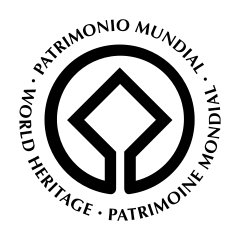Museum of Santa Cruz
The Museum of Santa Cruz (Spanish: Museo de Santa Cruz) is a 16th century building in the city of Toledo, Spain, which was originally an important hospital (Hospital de Santa Cruz), eventually becoming a museum in the 19th century.
| Museum of Santa Cruz | |
|---|---|
| Native name Spanish: Museo de Santa Cruz | |
 | |
| Location | Toledo, Spain |
| Coordinates | 39.859691°N 4.020144°W |
| Official name: Museo de Santa Cruz | |
| Type | Non-movable |
| Criteria | Monument |
| Designated | 1902 |
| Reference no. | RI-51-0000082 |
 Location of Museum of Santa Cruz in Spain | |

The hospital was founded by Cardinal Mendoza at the end of the 15th century to centralize assistance to orphaned and abandoned children in the city. It has a remarkable Plateresque portal, work of Alonso de Covarrubias. The building has a Greek cross plan and four courtyards, two of which were completely completed. The first is of Covarrubias and gives access to the upper floor through a three-ladder staircase.
The museum has two floors. The cruiser covers the two floors and is covered with ribbed vaults. In the north arm was located the chapel. The museum has sections of Archeology, Fine Arts and Decorative Arts. The Fine Arts funds are distributed on the first and second floor of the building, and those of archeology, in the Noble Cloister and in an underground floor. The Decorative Arts have a sample of Toledan folk handicrafts, which is also located on the floor of the basement.
Artistic description
It was conceived with six cradles that intersect forming four courtyards for ventilation and for that high windows are used. It is still unfinished (not two courtyards were made, as they were conceived) and was devised as an exempt building. The altar is located in the center and the courtyards are devised seven of which are made four and those four, only one was finalized by Alonso de Covarrubias.
There are four large cradles, which connect with the courtyards, on two floors made by Enrique Egas and in the center is the table with the altar. The arches are carpaneles and on pillars with litter and cherubim in the coat of arms of Mendoza.
In general there is a symbiosis of the Moorish tradition with Flemish art. Cover of pair and knuckle in framed wood of casetones. The wood has decorative and utilitarian function. The ashlars are well carved and the portal was made by Covarrubias, made it entintelada, the entablature flanked by pseudocolumns paired and with niches and doseletes; and decoration Grotesque in the fustes.
The pediment is round classic that houses the discovery of the Lignum crucis by Saint Elena. It supports the entablature with another body. An archivolt was broken to place a niche representing charity. At the top are the Virgin's wedding dresses with dolphins.
The windows are symmetrical with bulbous order and edicts with the emblem of Mendoza. The last body, later, is mannerist.
Museum of Santa Cruz Photographs



 Staircase
Staircase Courtyard detail
Courtyard detail El Greco, La Verónica. Museum of Santa Cruz
El Greco, La Verónica. Museum of Santa Cruz Roman mosaic
Roman mosaic- Travel chest, 16th century

See also
- List of Bien de Interés Cultural in the Province of Toledo
Notes and references
- This contains information taken from the homonymous article in the Spanish Wikipedia.
External links
| Wikimedia Commons has media related to Museo de Santa Cruz (Toledo). |
- Toledo Turismo.com: Museum of Santa Cruz—(in English)

